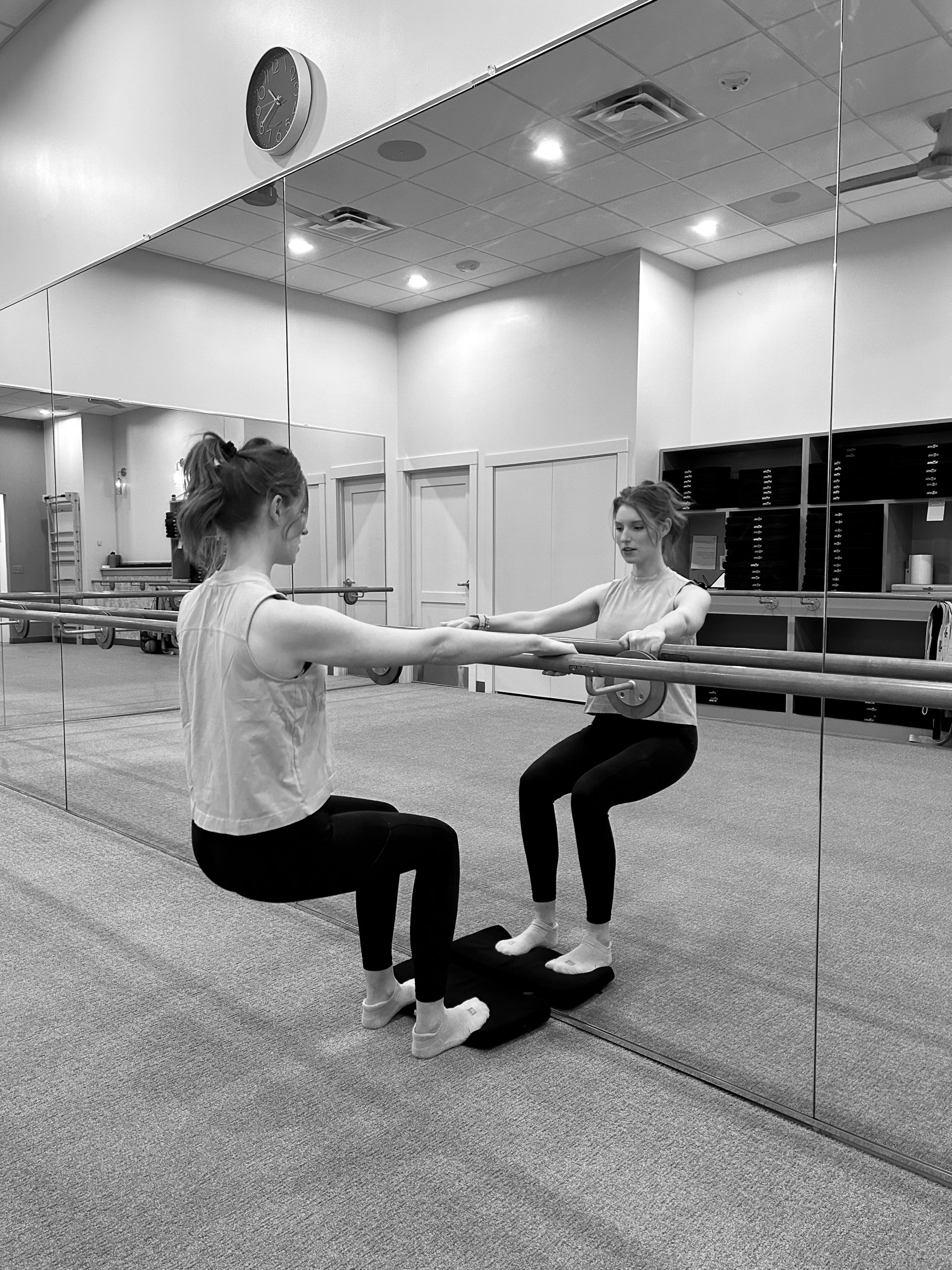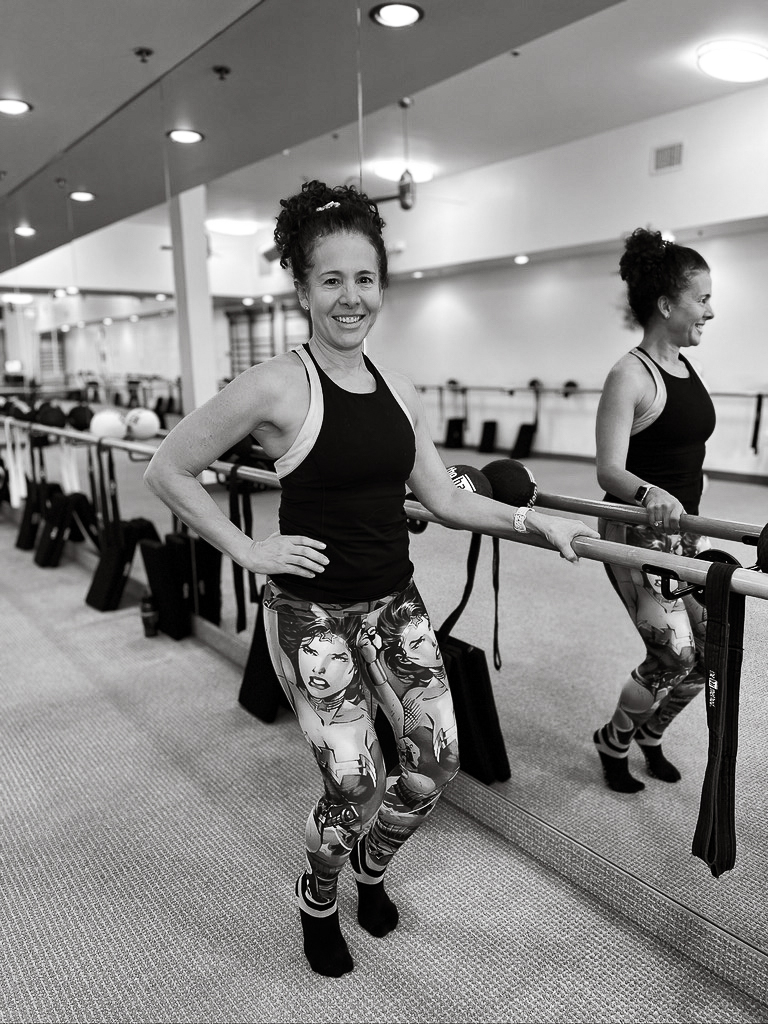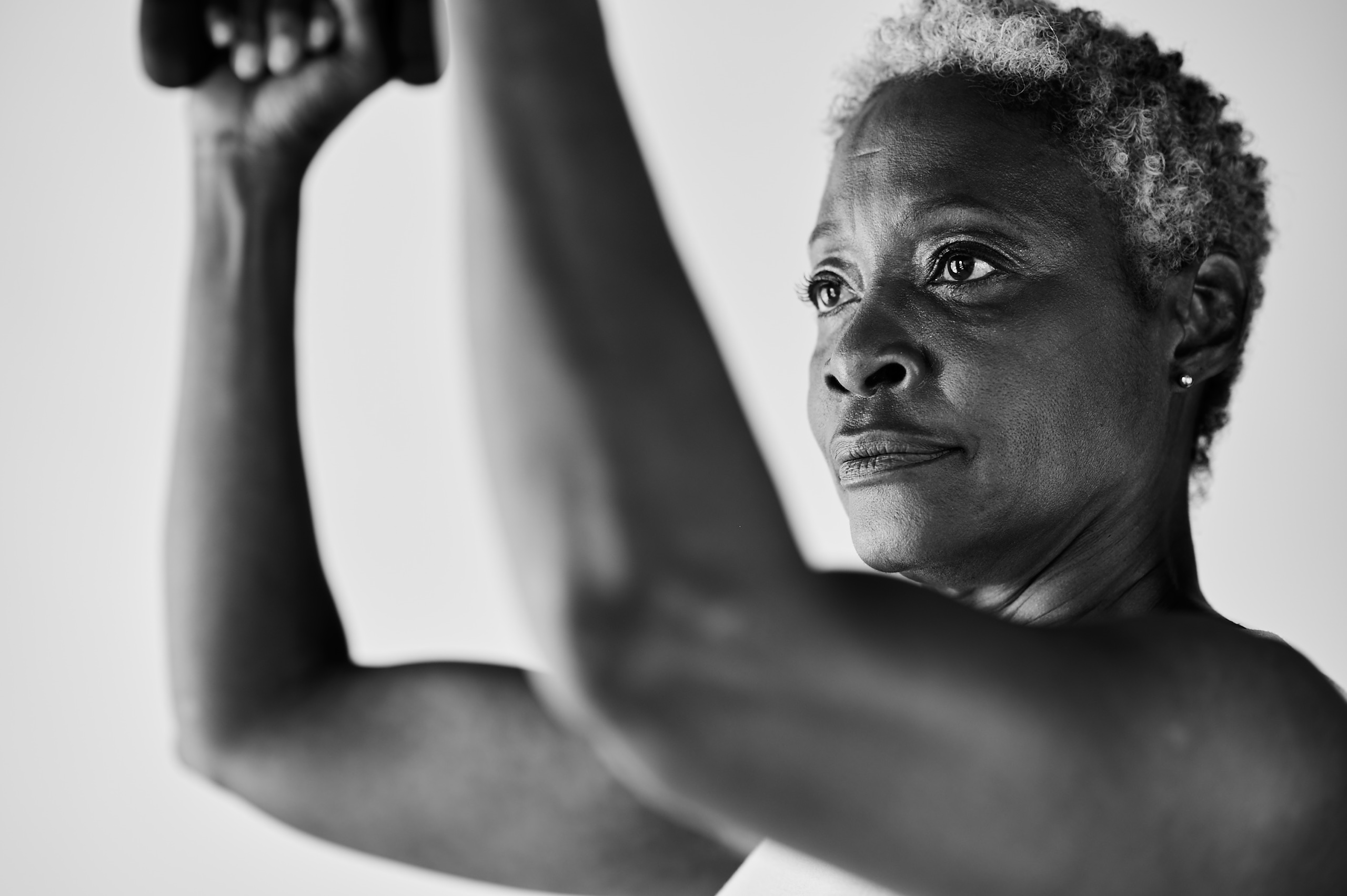Exclusive Offer 50% Off One Month Of Unlimited Classes
Adapting The Bar Method Workout To Students with Foot Problems
Look closely enough at the Bar Method’s technique and you’ll find a second Bar Method technique inside of it. This auxiliary Bar Method is similar to the original with the exception that it’s tailored to students with physical limitations or injuries. If you’re someone who is lucky enough not to have issues, you might be surprised at how many of your fellow students do.
Students have come to me about how to deal with inflamed joints, torn ligaments, strained muscles, exercise headaches, diaphragm cramps, bunions, vertigo, carpel tunnel syndrome, IT band syndrome, compressed disks, numbness in certain positions, diastasis split, plantar fasciitis, scoliosis, pelvic floor disorder, MS, whiplash, frozen shoulder and varicose veins. Others have consulted me about recovering from surgery and having immune diseases that cause weakness and pain. Don’t underestimate the frustration these students feel! They didn’t chose to have these problems, and I commend them for seeking an exercise routine they can do safely.
The first advice I give those who ask me how to adapt the class so that it works with their health issues is to consult a medical professional. I also let them know that most doctors recommend exercise to patients with most medical conditions since it’s an activity that strengthens both the immune system and the skeletal joints. By all measures the Bar Method would seem to an ideal choice for many of people with special conditions. It’s non-impact, rehabilitative and gentle — not to mention tremendously effective at strengthening the muscles around joints – and it comes with a comprehensive set of modifications designed for students with a wide range of physical limitations.
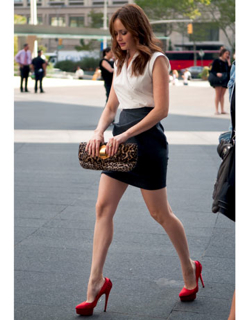 Take for example one of the most common physical problems that students encounter while exercising: sensitive feet. Due to fashion’s enduring fondness for putting women in super high heels, many students have beaten up their feet by wearing them, and I’m no exception. I have legs that are on the short side, so throughout the 70s and 80s while living in Manhattan I stuffed my feet into high heel boots, clogs, pumps, strappy sandals, skin-tight jazz shoes – whatever made me feel taller. By the early 90s I was hobbling and in 1994 had to have a bunion operation. This experience finally wised me up, and I switched to wearing medium heels. People with foot problems didn’t necessarily get them the way I did. Students have been injured by falling down the stairs, being run over by a bicycle, spraining their ankle, rupturing their achillis tendon, running marathons on pavement, or simply stubbing their toe really badly.
Take for example one of the most common physical problems that students encounter while exercising: sensitive feet. Due to fashion’s enduring fondness for putting women in super high heels, many students have beaten up their feet by wearing them, and I’m no exception. I have legs that are on the short side, so throughout the 70s and 80s while living in Manhattan I stuffed my feet into high heel boots, clogs, pumps, strappy sandals, skin-tight jazz shoes – whatever made me feel taller. By the early 90s I was hobbling and in 1994 had to have a bunion operation. This experience finally wised me up, and I switched to wearing medium heels. People with foot problems didn’t necessarily get them the way I did. Students have been injured by falling down the stairs, being run over by a bicycle, spraining their ankle, rupturing their achillis tendon, running marathons on pavement, or simply stubbing their toe really badly.
In whichever manner students came to have their foot conditions, my own past experience gives me a personal reason for making the class totally doable for them. Here’s how I’ve tailored the workout, exercise by exercise, so that such students can do it with minimum stress to their feet:
— During heel lifts, you can either raise both of your heels just an inch up and down, or alternate your heels.
–During thigh-work:
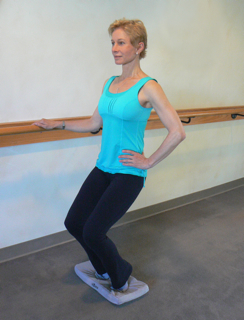 – If you’re a student who takes in a studio: do “chair” in place of parallel and legs-together thigh-work. “Chair” is a thigh-work position during which the feet stay flat on the floor (the teacher will show you how to do it).
– If you’re a student who takes in a studio: do “chair” in place of parallel and legs-together thigh-work. “Chair” is a thigh-work position during which the feet stay flat on the floor (the teacher will show you how to do it).
– If you’re a student who does the Bar Method DVDs, simply keep your heels low and bend your knees less than the DVD instructor is doing.
– If you simply have sensitive feet, try standing on a small Bar Method mat (shown at right), which you’ll be able to buy on our website starting this week.
– Whichever Bar Method workout you’re doing, feel free to substitute leg lifts for any other thigh exercise.
Whatever your foot issue, I hope these guidelines enable you feel the burn in comfort!
Find Bar Method exercise classes near you.

